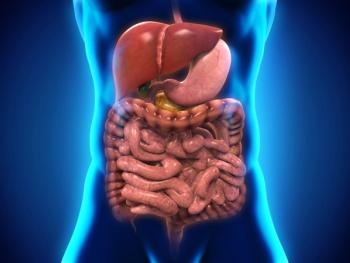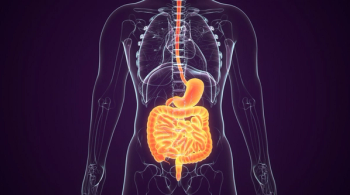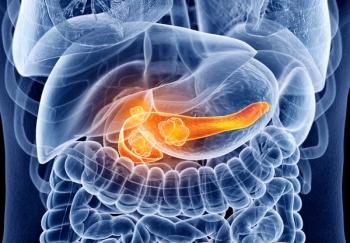Chemotherapy vs Chemoradiation in Locally Advanced Pancreatic Cancer
There have been five trials that have compared ineffective standard treatment options to each other in locally advanced pancreatic cancer. The trial that has had the greatest impact on clinical practice thus far is the LAP 07 trial. Preliminary data from the LAP 07 trial revealed no clear benefit from consolidative chemoradiation following chemotherapy.[1] These results, coupled with the introduction of more active systemic regimens, have led to a shift at most academic centers to the much more selective use of consolidative chemoradiation. Four other randomized trials have compared chemotherapy to chemoradiation.[2-5] Results have been mixed: two trials modestly favored a chemotherapy approach,[3,4] whereas the other two trials modestly supported an initial chemoradiation strategy.[2,5] Collectively, what these five randomized trials illustrate most clearly is the substantial degree to which standard therapies are limited in their effectiveness. They offer no hope of long-term survival.
The Median Is Not the Message: The Importance of Local Tumor Control in Locally Advanced Pancreatic Cancer
Our patients want to live longer, and most of all they want some hope of cure. Although the natural history of pancreatic cancer is dominated by the development of metastatic disease, local tumor progression contributes significantly to morbidity and mortality. Locoregional progression has been reported to occur in 33% to 73% of patients.[6,7] It is clear that a subset of patients do not ever develop metastatic disease, and some patients with metastatic disease die from local tumor progression. A recent rapid autopsy series from Johns Hopkins reported that 28% of patients with locally advanced pancreatic cancer had no evidence of metastases at the time of death, and SMAD4 loss correlated with widespread distant metastatic disease.[8] We reported a similar rate of local progression–related death, as well as a correlation of SMAD4 expression with the pattern of disease related to death, in a phase II trial of 69 patients with locally advanced pancreatic cancer that evaluated cetuximab-based chemotherapy followed by chemoradiation (50.4 Gy in 28 fractions). The median survival of 19.2 months was long enough to evaluate late local tumor progression (20% at 15 months, increased to 65% at 2 years). Local tumor progression was the dominant cause of death after 15 months.[9] The median survival in nearly all other studies of locally advanced pancreatic cancer is too short to evaluate the highest-risk time period for local tumor recurrence. One-year local tumor control is often emphasized, but has little relevance. Local tumor progression is a barrier to long-term survival in locally advanced pancreatic cancer and is the reason there is almost never a tail to the survival curve. The best evidence for the impact of effective local tumor control on survival comes from resected patients: resection leads to a substantial median survival benefit and cure in 20% of patients. Similar results can be achieved in selected patients with the use of definitive doses of radiotherapy.
Low-Dose Stereotactic Body Radiotherapy in Pancreatic Cancer: A False Promise
Stereotactic body radiotherapy (SBRT) is capable of precisely delivering high doses of radiation to small tumor volumes. SBRT is an attractive option for primary or metastatic tumors occurring in organs with parallel functional subunits, such as the lung or liver. Ablation of a small volume of normal liver or lung tissue surrounding the tumor usually has no significant clinical consequence. In contrast, ablative doses near an organ with serial functional subunits, such as the gastrointestinal tract, are not possible without affecting organ function. If a radiosensitive structure such as the duodenum, small bowel, or stomach is in close proximity to a radioresistant target, such as a pancreatic tumor, ablative doses cannot be given in 5 fractions. To ensure safety, clinicians are giving palliative doses-eg, 25–32 Gy in 3 to 5 fractions, which is roughly half the dose needed for ablation of even small tumors (50 Gy in 5 fractions). The only prospective multi-institutional trial has defined a safe and convenient regimen (33 Gy in 5 fractions), but as with standard-fraction chemoradiation, there is no evidence of long-term survival.[10]
Expanding the Therapeutic Index: Hypofractionation Using an SBRT Technique
In order to maximize the therapeutic index, we use the time-honored principle of fractionation to maximize the biological equivalent dose (BED). Using an SBRT technique, we deliver definitive doses in 15 or 28 fractions to the primary tumor using feedback-assisted inspiration breath hold with daily diagnostic-quality CT-on-rails, image soft-tissue registration, and intensity-modulated radiation therapy (IMRT). This has allowed the delivery of up to a twofold increase in the BED compared with standard fractionation or low-dose SBRT. Our recently presented series using definitive doses (IMRT to 63–70 Gy in 28 fractions or 67.5 Gy in 15 fractions; BED, 77.2–97.9 Gy) demonstrated a dramatic survival benefit at 3 years (35%) and 5 years (20%) compared with the expected < 5% (Figure 1).[11] The only historical results that are comparable to ours in this disease are in resected patients with more favorable disease.
Key Points in the Treatment of Locally Advanced
Inoperable Pancreatic Cancer
- Local tumor progression leads to mortality in 30% to 50% of patients with locally advanced pancreatic cancer.
- All standard therapies, including low-dose palliative stereotactic body radiotherapy (SBRT), offer little hope of long-term survival.
- Hypofractionation with an SBRT technique in 15–28 fractions allows an expansion of the therapeutic index. Biocorrected doses of 77.2–97.9 Gy (63–70 Gy in 28 fractions or 60–67.5 Gy in 15 fractions) in selected patients appear to offer a hope of long-term survival similar to that of surgery.
We have typically excluded patients with tumors adjacent to bowel. In doing so, we have achieved a median gross tumor volume (GTV) coverage of 96% of the prescription dose. Although high doses could be delivered with this technique to tumors abutting the bowel, the GTV coverage would be lower. However, the extent of GTV coverage with the prescription dose does not appear to affect outcome in patients with GTV coverage as low as 70%, but more data are needed on this question. We use a simultaneous integrated boost (SIB) technique with three different planning target volumes (PTVs) that include a microscopic dose, an SIB to the entire GTV, and a higher SIB dose to the hypoxic center of the GTV in selected tumors. A representative plan is shown in Figure 2. The SIB to the entire GTV (67.5 Gy in 15 fractions or 70 Gy in 28 fractions) is treated with a 0- to 5-mm PTV. We subtract a planning organ-at-risk volume (PRV) for all luminal structures (termed “simultaneous integrated protection” or “SIP,” created by taking the four-dimensional contour of the luminal structure and adding 5 mm) from the high-dose PTV. We then reduce that volume by 10 mm to create the PTV to the hypoxic center. The microscopic dose is 37.5 Gy in 15 fractions or 50.4 Gy in 28 fractions. The hypoxic center of the tumor receives the higher dose of 75 Gy in 15 fractions or 98 Gy in 28 fractions. Most of the time, the tumor is too small or the bowel is too close for this central high dose to be given. The decision to use 0 to 5 mm for the PTV of the high-dose SIB is based on the proximity of the bowel. The microscopic PTV is treated with a 15-mm margin on the GTV, celiac axis, and superior mesenteric artery. We begin the planning process with larger expansions of the high-dose PTV and reduce these margins rather than the total doses to achieve plans that are within bowel tolerance. The decision between 15 and 28 fractions is made to maximize the GTV coverage to the prescription dose. Our bowel dose constraints, with the inspiratory breath-hold gating and CT image guidance that we use, are based on a previous analysis.[12] We use a maximum point dose of 60 Gy in 28 fractions and 45 Gy in 15 fractions for the stomach and descending duodenum. For the transverse duodenum and jejunum, we use a 10% lower constraint, 55 Gy and 40 Gy, because those structures are out of reach of an endoscopic argon plasma laser procedure, making the consequences of bleeding greater. Using these constraints, we have not had a significant bleeding event in 4 years.
RTOG/NRG Oncology 1201
The only National Cancer Institute–sponsored clinical trial that is active in the United States for this population has been designed to evaluate the role of dose escalation (Radiation Therapy Oncology Group [RTOG]/NRG Oncology 1201).[13] SMAD4 expression status is a stratification variable, and patients are randomly assigned to receive chemotherapy alone until progression in the standard arm, 4 cycles of chemotherapy followed by 50.4 Gy in 28 fractions, or 4 cycles of chemotherapy followed by 63 Gy in 28 fractions, with IMRT used in both chemoradiation arms. Concurrent capecitabine will be given with radiation. This trial will evaluate the role of SMAD4 as a predictive marker for chemoradiation decision making and will provide further data on the role of chemoradiation in the context of more active chemotherapy.
Financial Disclosure: The author has no significant financial interest or other relationship with the manufacturers of any products or providers of any service mentioned in this article.
References:
1. Hammel P, Huguet F, van Laethem J-L, et al. Comparison of chemoradiotherapy and chemotherapy in patients with a locally advanced pancreatic cancer controlled after 4 months of gemcitabine with or without erlotinib: final results of the international phase III LAP 07 study. J Clin Oncol. 2013;31(suppl):abstr LBA4003.
2. Gastrointestinal Tumor Study Group. Treatment of locally unresectable carcinoma of the pancreas: comparison of combined-modality therapy (chemotherapy plus radiotherapy) to chemotherapy alone. J Natl Cancer Inst. 1988;80:751-5.
3. Klaassen DJ, MacIntyre JM, Catton GE, et al. Treatment of locally unresectable cancer of the stomach and pancreas: a randomized comparison of 5-fluorouracil alone with radiation plus concurrent and maintenance 5-fluorouracil-an Eastern Cooperative Oncology Group study. J Clin Oncol. 1985;3:373-8.
4. Chauffert B, Mornex F, Bonnetain F, et al. Phase III trial comparing intensive induction chemoradiotherapy (60 Gy, infusional 5-FU and intermittent cisplatin) followed by maintenance gemcitabine with gemcitabine alone for locally advanced unresectable pancreatic cancer. Definitive results of the 2000-01 FFCD/SFRO study. Ann Oncol. 2008;19:1592-9.
5. Loehrer PJ, Feng Y, Cardenes H, et al. Gemcitabine alone versus gemcitabine plus radiotherapy in patients with locally advanced pancreatic cancer: an Eastern Cooperative Oncology Group trial. J Clin Oncol. 2011;29:4105-12.
6. Hattangadi JA, Hong TS, Yeap BY, Mamon HJ. Results and patterns of failure in patients treated with adjuvant combined chemoradiation therapy for resected pancreatic adenocarcinoma. Cancer. 2009;115:3640-50.
7. Van den Broeck A, Sergeant G, Ectors N, et al. Patterns of recurrence after curative resection of pancreatic ductal adenocarcinoma. Eur J Surg Oncol. 2009;35:600-4.
8. Iacobuzio-Donahue CA, Fu B, Yachida S, et al. DPC4 gene status of the primary carcinoma correlates with patterns of failure in patients with pancreatic cancer. J Clin Oncol. 2009;27:1806-13.
9. Crane CH, Varadhachary GR, Yordy JS, et al. Phase II trial of cetuximab, gemcitabine, and oxaliplatin followed by chemoradiation with cetuximab for locally advanced (T4) pancreatic adenocarcinoma: correlation of Smad4(Dpc4) immunostaining with pattern of disease progression. J Clin Oncol. 2011;29:3037-43.
10. Herman JM, Chang DT, Goodman KA, et al. Phase 2 multi-institutional trial evaluating gemcitabine and stereotactic body radiotherapy for patients with locally advanced unresectable pancreatic adenocarcinoma. Cancer. 2015;121:1128-37.
11. Crane C, Chanda A, Koay E, et al. Effect of dose-escalation of IMRT for unresectable pancreatic cancer 1 cm away from the luminal mucosa on long-term survival. J Clin Oncol. 2015;33(suppl 3):abstr 354.
12. Kelly P, Das P, Pinnix CC, et al. Duodenal toxicity after fractionated chemoradiation for unresectable pancreatic cancer. Int J Radiat Oncol Biol Phys. 2013;85:e143-e149.
13. Radiation Therapy Oncology Group. RTOG 1201 protocol information. Available at: http://www.rtog.org/ClinicalTrials/ProtocolTable/StudyDetails.aspx?study=1201. Accessed July 24, 2015.






















































































